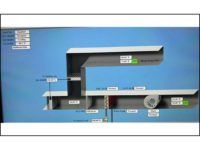After planning and preparing for a remote retro-commissioning site visit, as covered in my May 2021 column, commissioning professionals and on-site building representatives should be ready to work together on the fun part. A virtual systems walkthrough can be both productive, from the perspective of finding issues that need attention, and educational, regarding actual equipment conditions and system operations.
Every building (and its systems) needs to be evaluated, as each facility is unique. That is why the pre-visit documentation review, operator interviews, and energy use analysis are so important to making the most of the virtual retro-commissioning process. One cannot go blindly into an existing building with a generic checklist of things to do, many of which do not apply to the building, and expect anything but generic opportunities and non-customized recommendations for implementation. That may be OK as a starting point for an energy audit, but it is not the rigorous process expected from a retro-commissioning project.
The following are examples of a few remote test procedures that may apply to the building systems being retro-commissioned.
Building Pressurization — An over-pressurized or under-pressurized building is a red flag for HVAC system problems. A nice way to start a virtual walkthrough is to have the on-site person go to all (or selected) exterior doors, open them slightly, and use a tissue to document airflow direction and relative velocity. Similarly, if it is a large facility with different wings, check key building connection points for excessive flows in one direction or the other. The locations for these checks should be laid out by the commissioning professional based on building drawings prior to the walkthrough.
Component Configurations — For each system, whether it is an air-handling system or a hydronic or steam system, guide the on-site person from a main system component, such as a supply fan, boiler, or chiller, forward and backward along the ductwork (or piping system). In the process, visually identify and photo-document all equipment and controls components. It is critical to understand the order of installation, and, unfortunately, drawings, manuals, and/or building automation system (BAS) graphics are not 100% reliable for true as-installed conditions.
Outside Air Damper Operation — Ask the on-site person to open the access door to view each outside air damper and send a photo of their “found” positions. Then, request the on-site person to stop the air-handling unit and confirm the outside air damper strokes fully closed. After restarting the air-handling unit, ask the on-site person to override the control system (there are multiple ways to do this, depending on the system and its user interface) to command the outside air damper fully open. Confirm the damper strokes fully open.
Clearly, this type of damper operation check can and should be applied to all control dampers, but outside air dampers are the most important for energy conservation and proper building ventilation. Next, in order of priority, are return air and relief air dampers associated with large air-handling systems.
Control Valve Operation — Have the on-site person command a heating or cooling coil control valve closed. Wait 20-30 minutes (while continuing with other virtual activities) and check to see if the hot or cold fluid is passing through the “closed” valve. This can be done by touching any bare pipe downstream of the valve, measuring the temperature of the coil face (if accessible), or measuring the air temperature difference between upstream and downstream of the coil.
Throttled Pumps — Visit each pump. If there is a triple-duty valve downstream of it, check the position of its “balance valve.” If it is closed a significant amount, there is an opportunity for energy savings.
Variable Frequency Drive (VFD) Speeds — Visit each pump or fan VFD. Make note of any that are running at maximum speed and any that appear to be overridden to a constant speed. Both of these conditions are red flags for further investigation.
In summary, physical confirmation of component configuration and functionality is valuable for identifying issues that need attention. They are also a prerequisite to extracting the most value from a remote BAS review, which I’ll cover in next month’s column.





